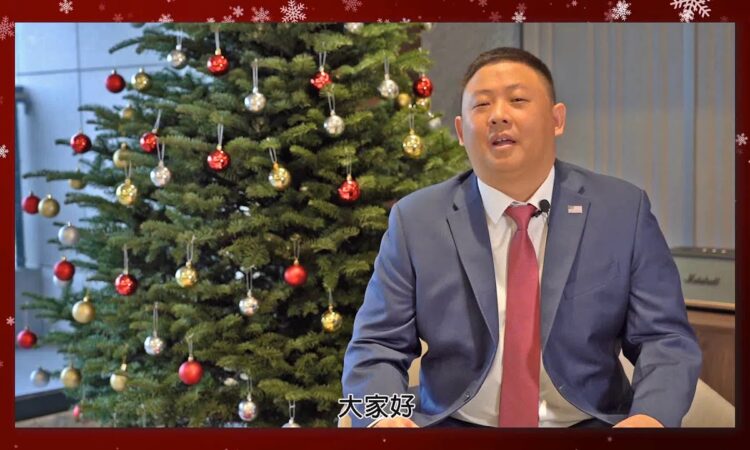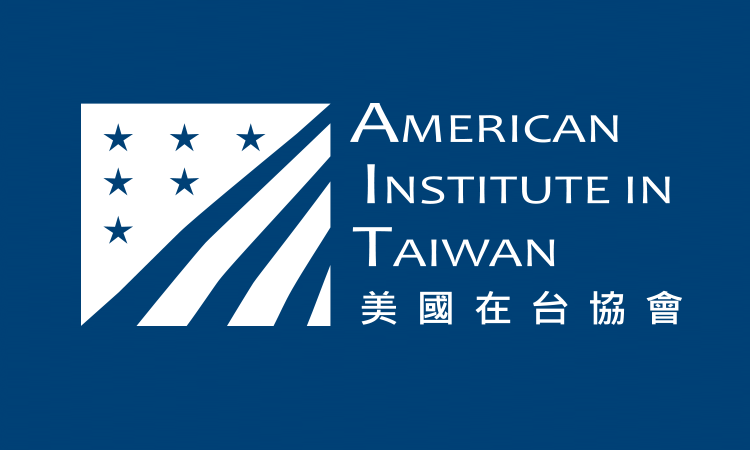OT-2034
September 1, 2020
Remarks by U.S. Ambassador-at-Large to Monitor and Combat Trafficking-in-Persons John Cotton Richmond at the
2020 International Workshop on Combating Human Trafficking
September 1, 2020
(as prepared for delivery)
My sincerest thanks to the National Immigration Agency and the Ministry of Foreign Affairs for inviting us to participate in this event.
My name is John Richmond, and I am the U.S. Ambassador to Monitor and Combat Trafficking in Persons, and I am so grateful to participate here today – although I wish I could participate in person.
Doctor [Director] Christensen very accurately depicted the successes of the Taiwan authorities in combating trafficking in persons over the past several years—successes that have earned 11 consecutive years on the Tier 1 ranking in the Department of State’s Trafficking in Persons Report, the very highest ranking possible.
We have seen firsthand how this dedication has paid dividends in this global fight for freedom.
And it’s not just the authorities who have demonstrated a strong commitment to fight trafficking. Taiwan has an active, thriving, and vocal array of civil society organizations all working to ensure that Taiwan can stop traffickers, protect victims, and prevent this crime by dismantling the systems that make it easier for traffickers to operate.
We have learned a great deal from these groups during our own travel through Taiwan and have been honored to carry their messaging in our publications, engagement, and public diplomacy.
In 2018, we had the distinct pleasure of awarding Taiwan’s own Allison Lee the TIP Hero Award for her efforts to organize, protect, and tirelessly advocate against forced labor in Taiwan’s fishing industry.
Now, the tragic collapse in 2019 of the Nanfang’Ao Bridge in Yilan killed several foreign fishermen who were forced to sleep on their boats, rather than allowed to go ashore while in port And I understand that at least one of these fishermen, an Indonesian man, had recently been injured while performing backbreaking work aboard a vessel in Indonesian waters. He had lost a finger, and his captain had begrudgingly allowed him a day or two in a local Indonesian hospital before attempting to set sail again, his hand far from healed. The fisherman called Allison, who got in touch with one of her local Taiwan labor official contacts, and ultimately together they were able to press the captain to agree to a week in the hospital.
But after that week had passed, even though the fisherman’s hand had not yet healed, the captain forced him to get back on the boat; he sailed to Taiwan and, while sleeping on board the ship on October 1, was crushed to death under the collapsing bridge.
Amid significant pressures from local business associations and local officials to remain quiet about this heartbreaking story, Allison began collecting resources for their families and speaking out publicly about forced labor in fishing vessels.
We would like to recognize and thank Allison for her enduring advocacy, which continues to inspire us all, and which we feel is a guiding symbol of Taiwan’s dedicated civil society landscape.
On Trends
Through our very frank discussions with authorities and civil society groups alike, we have learned much about how traffickers (whether they are individuals, businesses, recruitment agencies, ship owners, or others who benefit from forced labor) – we’ve learned about how traffickers target migrant workers on the island of Taiwan as well as foreign seafarers working from its vast maritime commercial activities – because traffickers want to target the vulnerable.
Taiwan is host to more than 700,000 foreign workers employed as home caregivers and domestic workers, or in farming, manufacturing, meat processing, construction, and fishing. Some of these workers incur substantial debts to pay recruitment brokers in their home countries or in Taiwan, and these debts are tools of coercion in the hands of traffickers, who want to obtain or retain their labor through means of coercion.
Coercion comes easy for traffickers who force domestic workers and home caregivers to provide labor. Their victims often live in their employers’ residences, making it difficult for others to monitor their working and living conditions. According to one survey, 90 percent of employers of migrant domestic caregivers in Taiwan withhold their victim’s travel and identity documents as a means to compel their labor.
Foreign seafarers are also particularly vulnerable to senior crew members who intend to force them to work. Documented and undocumented Chinese, Indonesian, Filipino, and Vietnamese fishermen working on Taiwan-owned or -flagged fishing vessels experience nonpayment or under-payment of wages, long working hours, physical abuse, lack of food or medical care, denial of sleep and substandard safety equipment, as well as poor living conditions while indebted to a complex of multinational brokerage networks.
The owners and operators of these fishing vessels use threats of physical violence, beatings, withholding water and food and, retention of those identity documents, wage deductions, forced cost-sharing while on board these vessels, and often for months or years at a time without ever coming ashore, and they use these methods to force victims to work. Senior crewmembers even force migrant workers to fish illegal stock, including threatened and endangered or protected species, placing the migrant fisherman at high risk of criminalization. And this is a common tactic of traffickers all over the world: they cause their victims to engage in unlawful conduct to make sure that, if governments ever investigate, the police will arrest the victims instead of the traffickers.
These practices contaminate global seafood supply chains, impacting countless markets around the world.
Just this past week, U.S. Customs and Border Protection issued a second enforcement action against a Taiwan-owned, Vanuatu-flagged fishing vessel for continued forced labor practices. Customs and Border Protection’s Office of Trade directed the issuance of a Withhold Release Order against a ship based on information that reasonably indicates the crime of forced labor, by means of physical force, debt manipulation, withholding of wages, and abusive living and working conditions.
Recommendations
With all these issues in mind, as Director Christensen indicated, Taiwan still has a lot of work to do.
Over the past years we’ve had many productive conversations about these issues with people like Allison Lee as well as Minister without Portfolio Lo Ping-Cheng, head of Taiwan’s interagency TIP taskforce.
Through these conversations, we have collected some observations about the things Taiwan can do to address forced labor in maritime industries.
On Prosecution
In the area of law enforcement, we’ve talked about how Taiwan increased inspections of fishing vessels in 2019 to identify trafficking victims. In the future, Taiwan should continue to increase the frequency of these inspections, particularly within its Distant Water Fleet, and refer all possible forced labor cases for criminal investigation and prosecution of senior crew vessel members as well as the owners.
Additionally, enacting and implementing policies to expedite maritime forced labor investigations would help prevent suspects from fleeing prior to facing justice.
And to help law enforcement with streamlined investigations to access information, Taiwan should require all deep [distant] water fishing vessels to use standard international maritime call signs, and it should register all Taiwan-owned and Taiwan-flagged fishing vessel names, licenses, authorized operation areas, and foreign-hired crew manifests in a single, standardized database system.
On Protection
In the area of victim protection, we understand that not all maritime inspection authorities are familiar with how to identify or refer victims of human trafficking. Taiwan should strive to train these inspectors on victim identification, referral to care, and notification of law enforcement procedures.
This will involve comprehensive, victim-centered interviews among foreign fishing crewmembers to screen for possible forced labor during portside and at-sea vessel inspections. This will also involve expanding the authority to formally identify victims beyond law enforcement to other key stakeholders in an effort to detect and combat trafficking.
On Prevention
Some of the most immediately achievable steps Taiwan can take in the fight against trafficking—not just in maritime industries, but in general—are in the area of prevention.
There are often “red flags”—or clear signs of trafficking vulnerabilities—in the practices of unscrupulous labor recruitment brokerage systems. Observers suggest Taiwan could prevent abusive recruitment agencies from operating if civil society groups had formal input into the licensure process.
Recruitment agencies and employers often create the very vulnerabilities in migrant fisherman that they later exploit. Taiwan should ban recruitment agencies and employers from charging foreign workers any recruitment fees, service fees, or deposits – and they should enforce the ban. Employers should bear these costs. The authorities can then strengthen efforts of oversight over all foreign worker recruitment and placement agencies and processes to screen for these abusive indicators and stop them before they lead to human trafficking.
Finally, Taiwan should enact a full ban on retention of all migrant workers’ identity and travel documents by employers. Employers just should not keep their employees’ important documents.
Closing points
We have been so encouraged to watch Taiwan take landmark steps each year to combat trafficking, and we’ve been grateful for the opportunity to continue to learn from and engage with Taiwan’s interagency taskforce and the vibrant civil society community.
We look forward to continuing these discussions during and after this workshop, and we eagerly await news of further improvements as we look to Taiwan’s efforts in 2020.
Thank you for allowing me to participate today, I’m grateful for your partnership, and I look forward to what is to come. I’m glad we’re in this fight together.


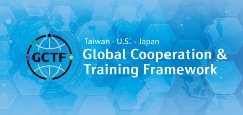




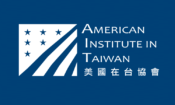
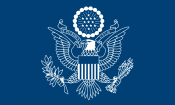
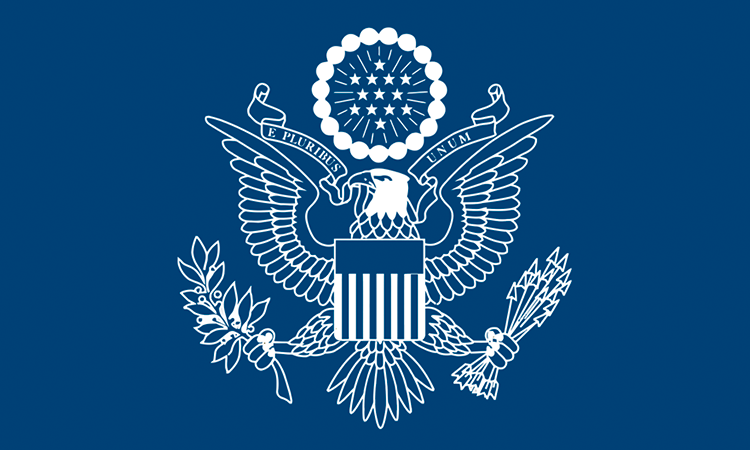





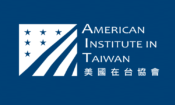
![Video Thumbnail [Recovered]-01](../wp-content/uploads/sites/269/Video-Thumbnail-Recovered-01-1-750x450.jpg)
